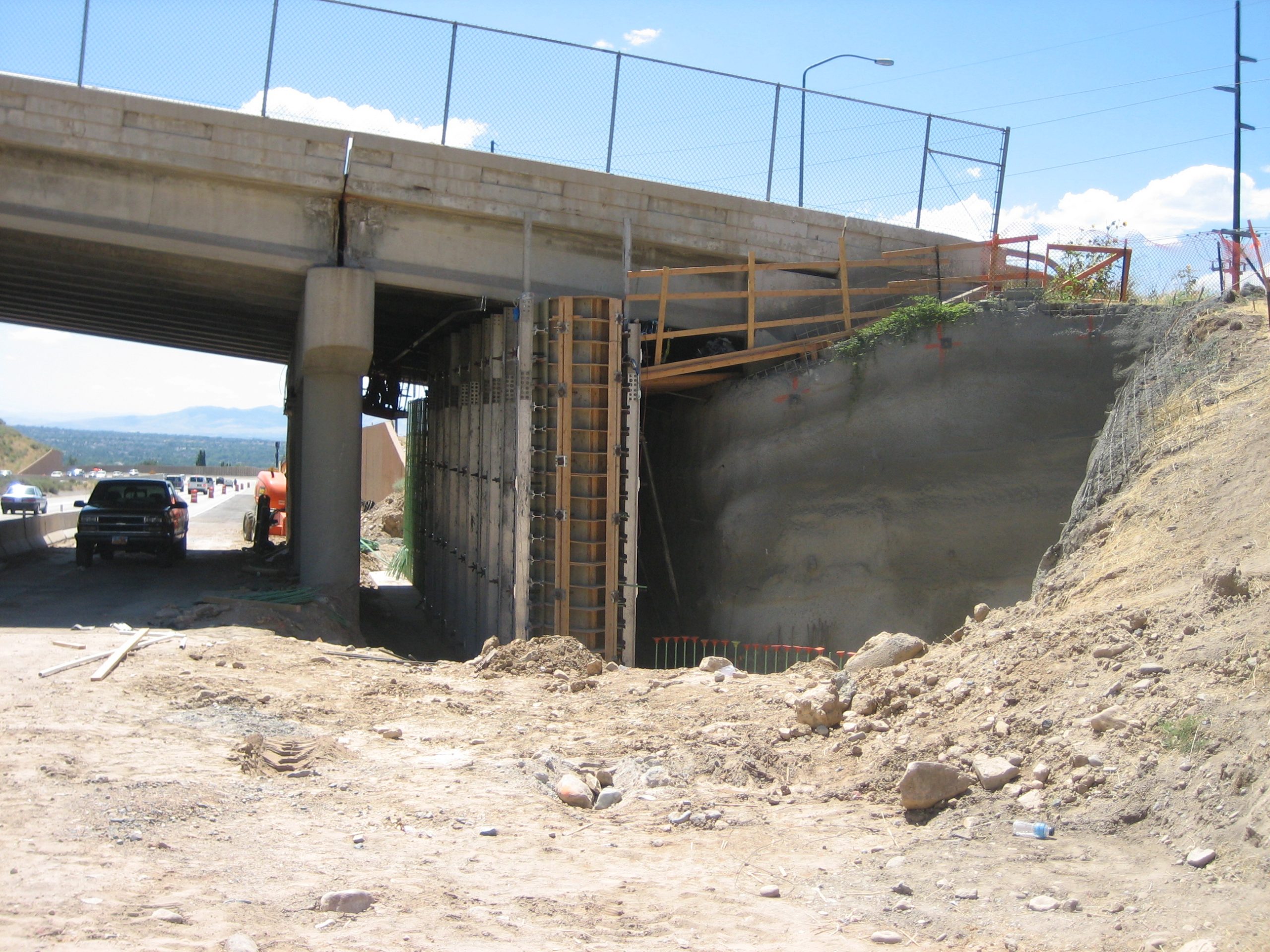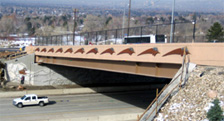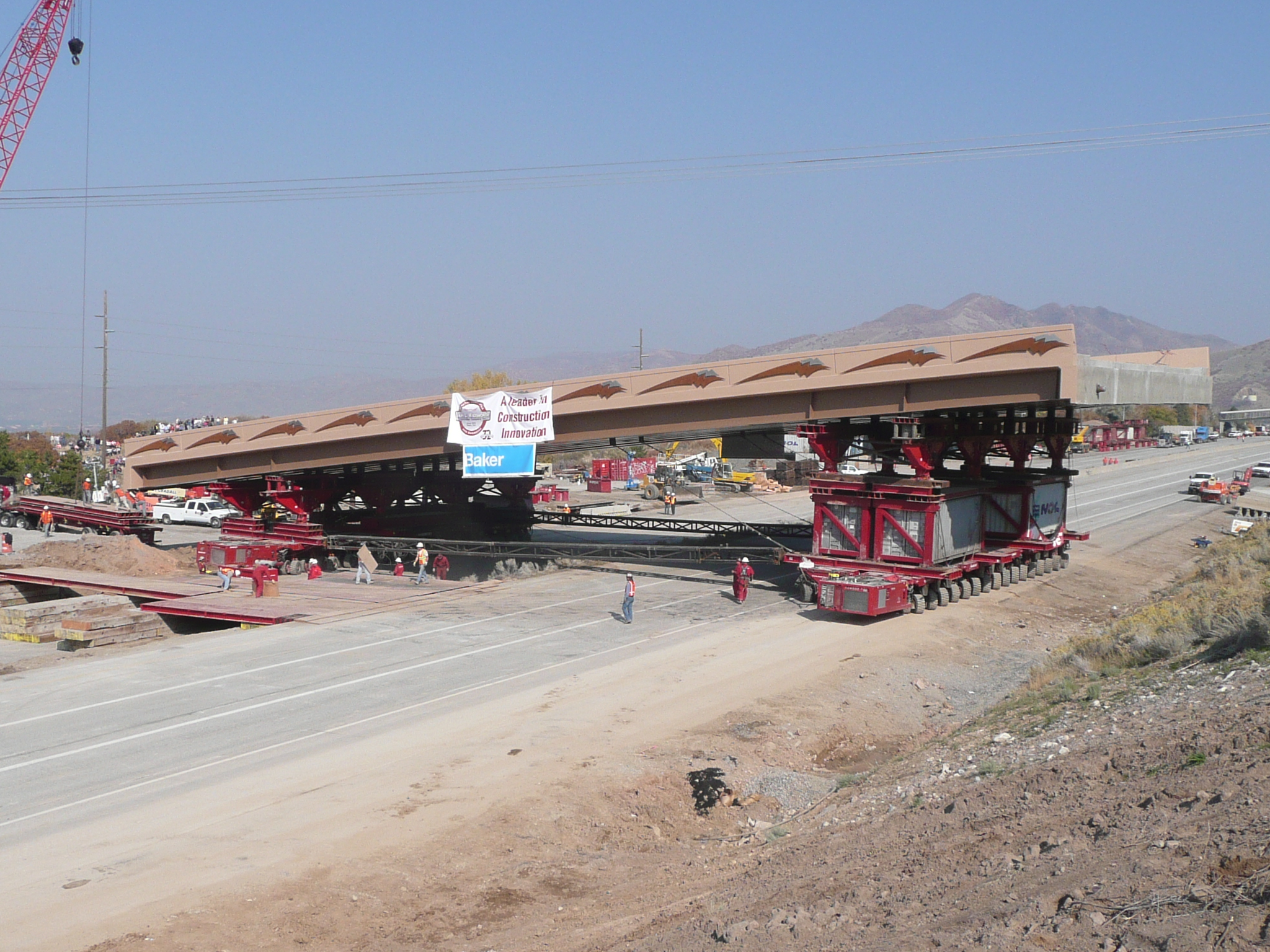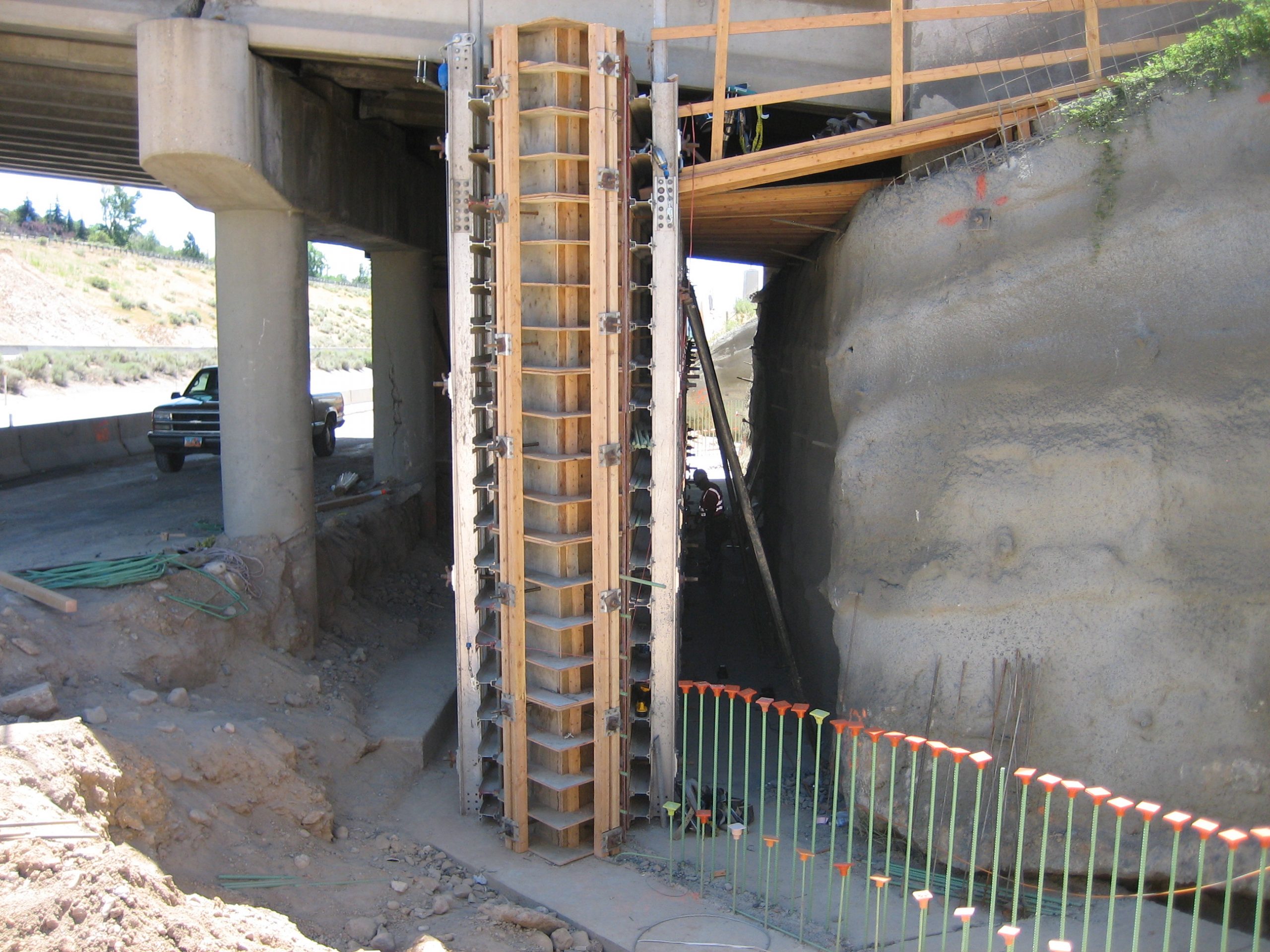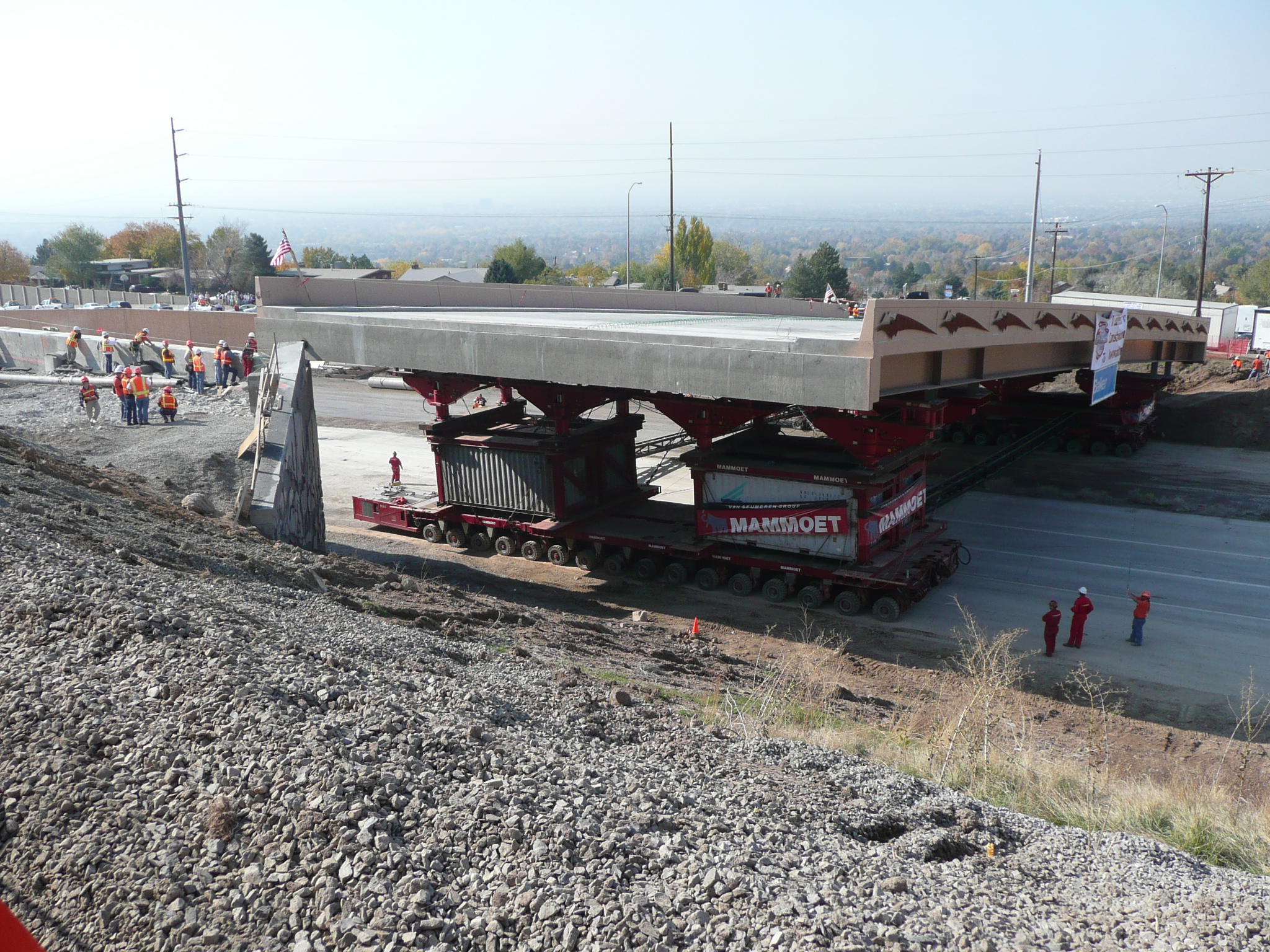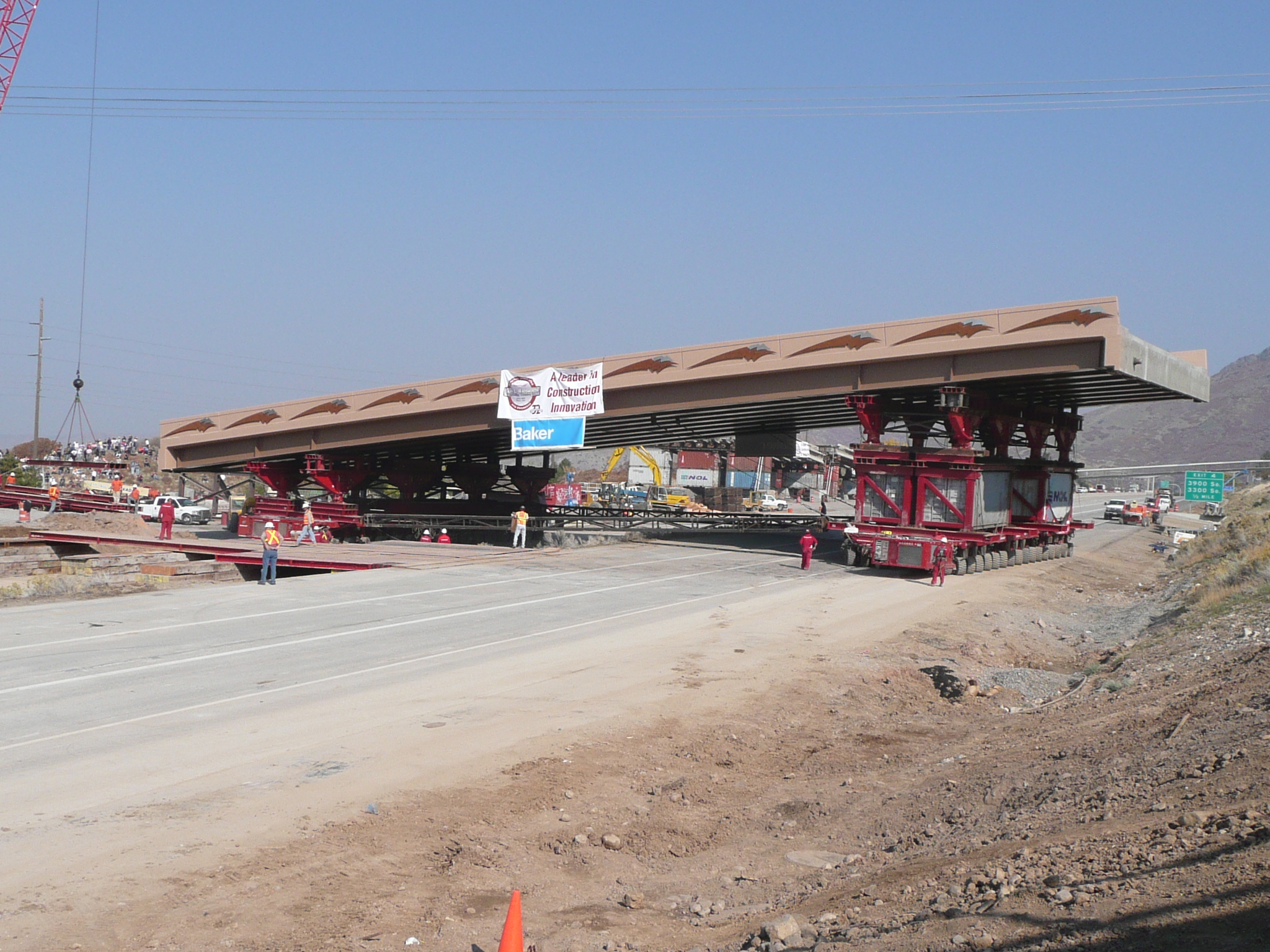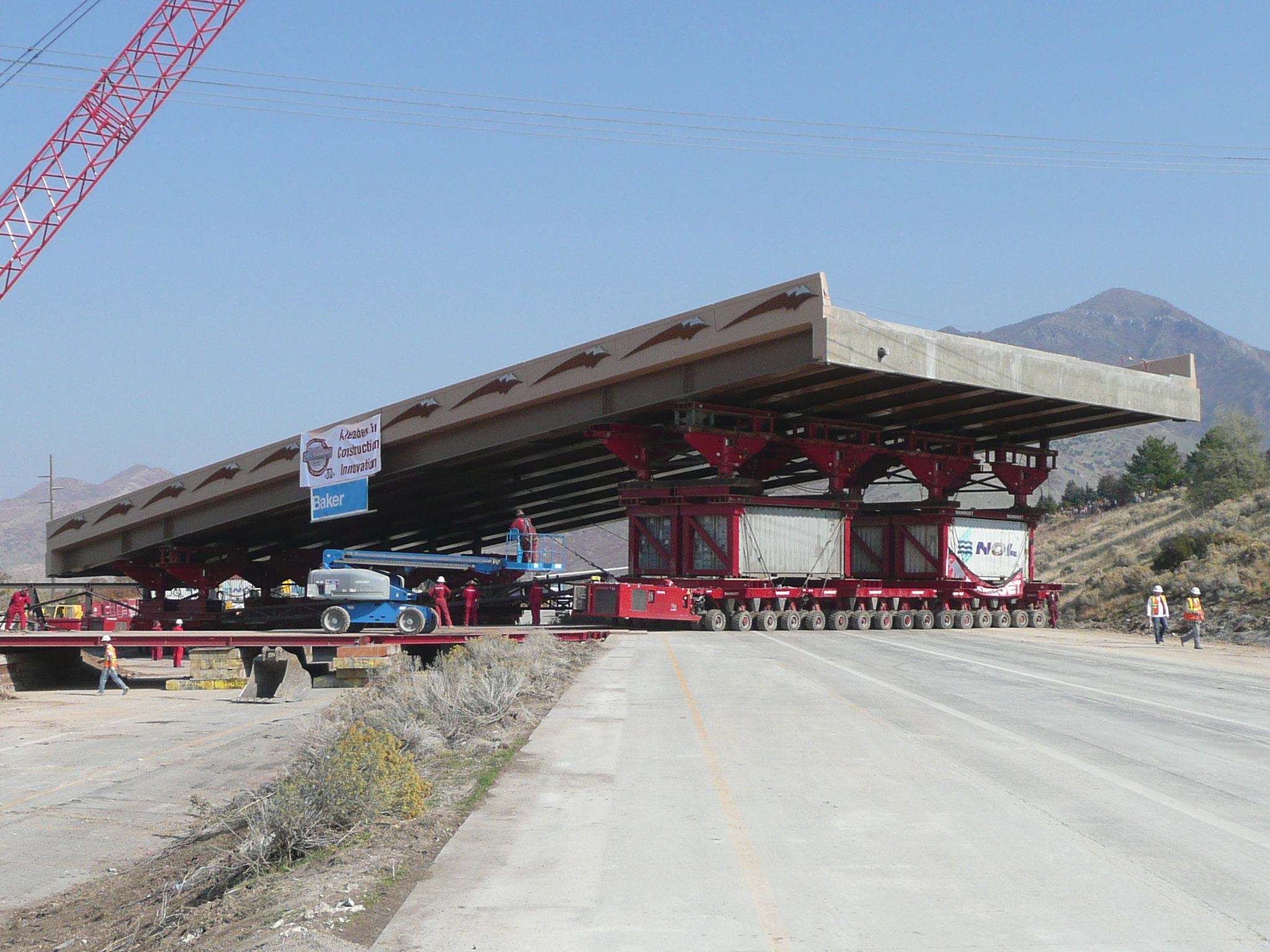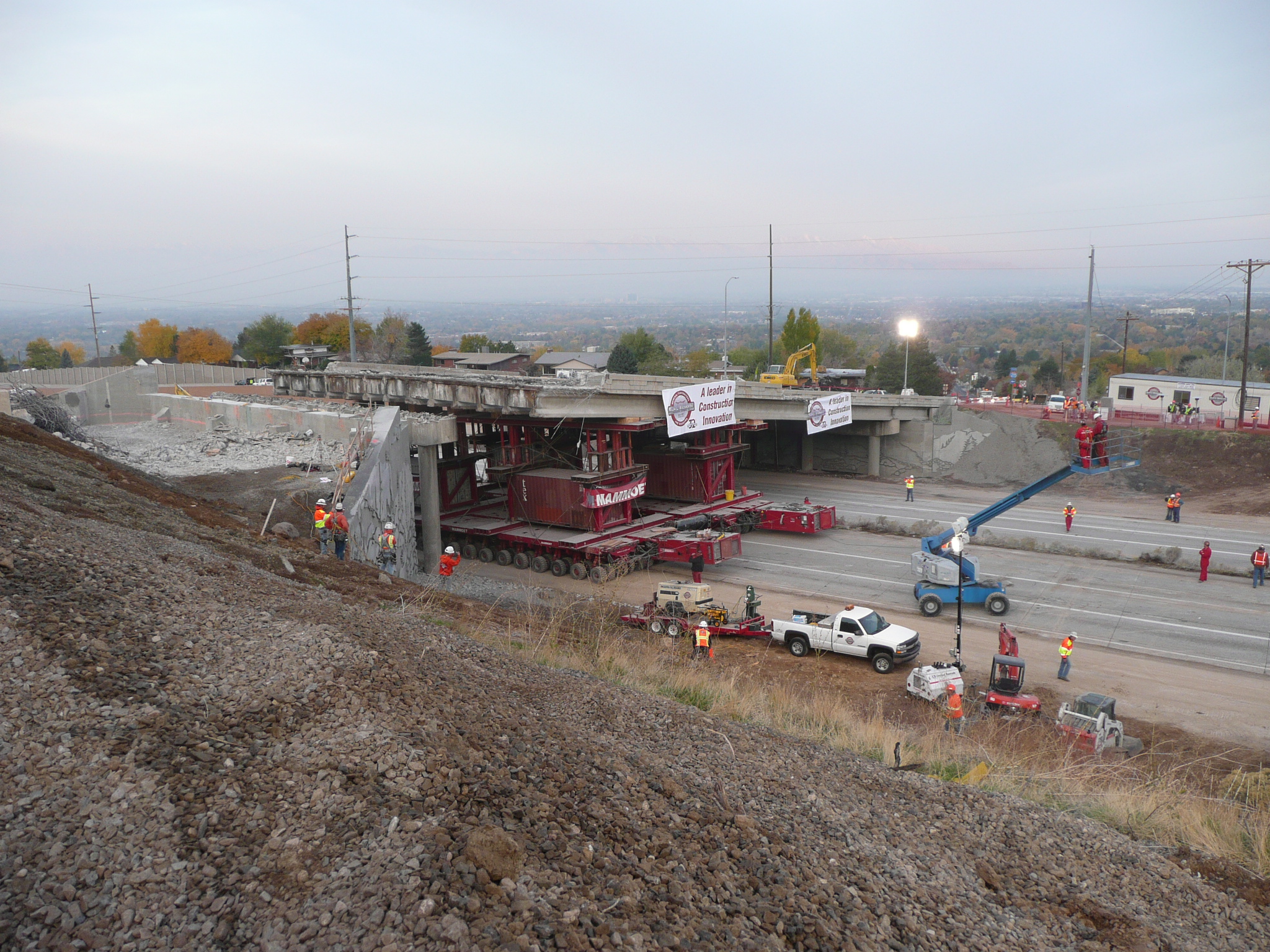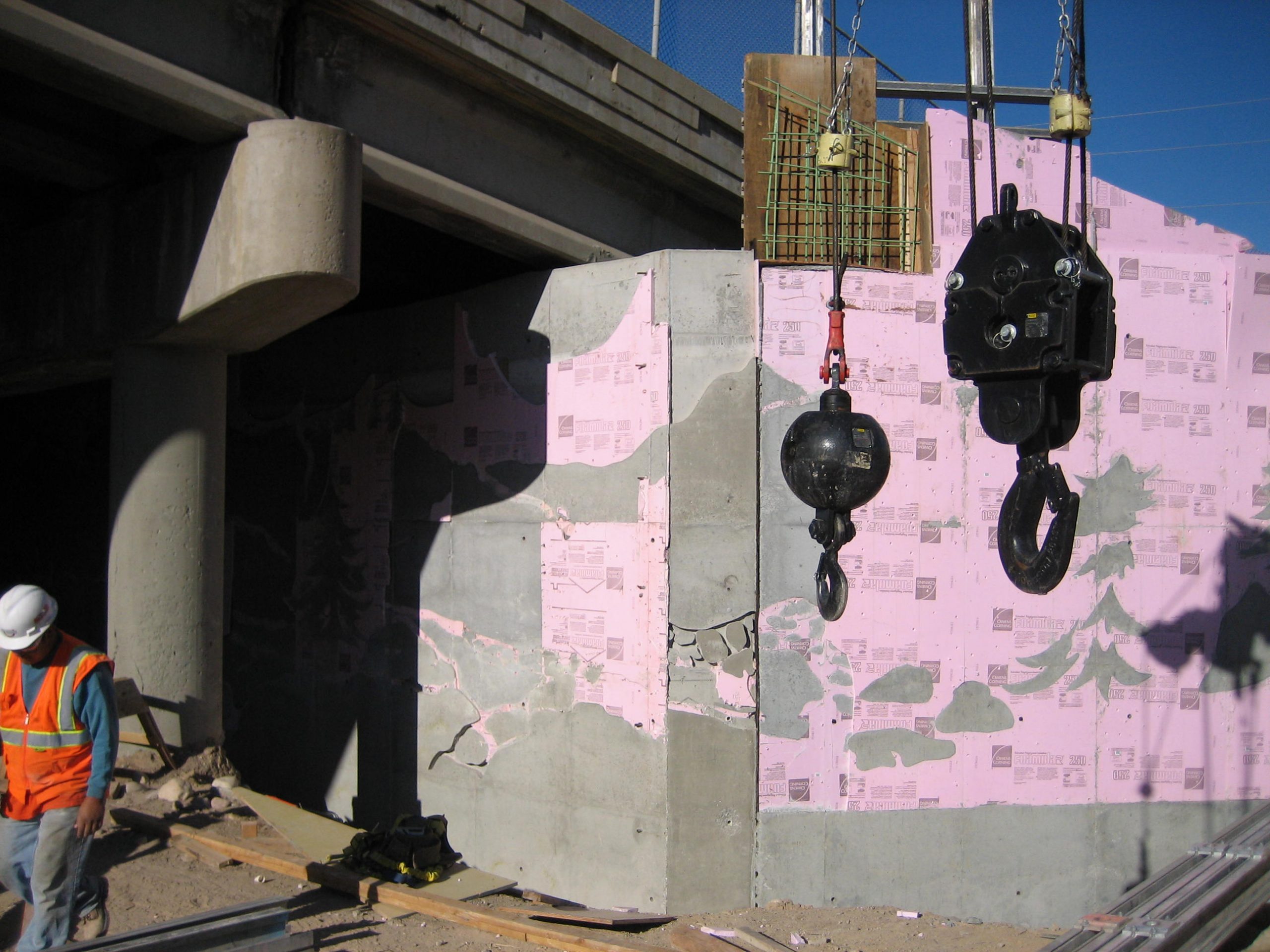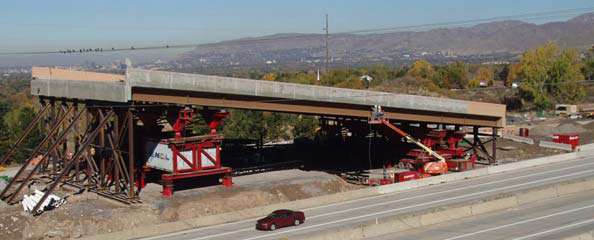State: UT
County:
Owner: State
Location: Urban
Spans: One-span
Beam material: Concrete
Max Span Length (ft.): 172
Total Bridge Length (ft.): 172
Construction Equipment Category: SPMTs
ABC Construction Equipment: SPMT(s)
State ID Number: F-I215(126)13
NBI Number: 0C 953
Coordinates
Latitude: 40.6741676 | Longitude: -100
Bridge Description
Project Summary:Project Location:
4500 South (SR-266) over I-215 in Salt Lake City
Impact Category:
Tier 2 (within 3 days)
Mobility Impact Time:
ABC: weekend closure of I-215 (53 hours) 10-day closure of 4500 South ; Conventional: 40-50 weeks of construction-related congestion
Primary Drivers:
reduced onsite construction time; reduced traffic impacts; improved work-zone safety; improved site constructability; improved material quality and product durability
Dimensions:
172-ft long and 82-ft wide single-span bridge roll-in; 1,600-ton self-weight
Average Daily Traffic (at time of construction):
66000
Traffic Management (if constructed conventionally):
Traffic management alternative, if constructed conventionally: extended detour
Existing Bridge Description:
Four-span bridge (F-156) 244-ft-long and 77.2-ft-wide. Built in 1971, it had a deteriorated superstructure and substructure that required replacement in 2007.
Replacement or New Bridge:
Construction Method:
The replacement superstructure was built near site on temporary supports while the replacement abutments were built below the existing bridge with I-215 traffic maintained. The abutments were built on cast-in-place spread footing foundations with full-height cast-in-place wingwalls while 4500 South traffic remained operational. Free-draining backfill was used to minimize needed compaction behind the abutments. The free-draining backfill used a prescriptive compaction method with a vibratory roller; no compaction tests were required. Friday EveningI-215 and the 4500 South bridges were closed.Saturday The two existing spans crossing I-215 were removed in seven hours with self-propelled modular transporters (SPMTs), while the two smaller existing end spans and substructures were demolished conventionally. SundaySPMTs moved the replacement superstructure into place. The removal and replacement took 53 hours over a weekend; the move would have taken less time but was delayed to allow for daylight observance of the move by showcase participants. Monday morning 3 a.m.I-215 was reopened to traffic with the 4500 South Bridge reopened 10 days later. Precast approach slabs helped speed the bridge reopening.
Stakeholder Feedback:
Construction Manager General Contractor (CMGC) was critical to making this project successful in the extremely short amount of planning and construction time allotted. Use of CMGC allowed the contractor and designer to work in a collaborative manner at the early part of the planning stage to seek improved constructability solutions.
High Performance Material:
Lightweight concrete deck
Project Planning
Decision Making Tools: State processSite Procurement:
Project Delivery: CM/GC
Contracting: Full lane closure
Geotechnical Solutions
Foundations & Walls: CIP substructure under trafficRapid Embankment: Self-compacting backfill
Structural Solutions
Prefabricated Bridge Elements:Prefabricated Bridge Systems: FDcBs (full-width concrete-decked steel beam unit)
Miscellaneous Prefabricated: Precast approach slab; LWC deck
Costs & Funding
Costs:The project cost was approximately $7.0 million which includes $2.5 million associated ABC costs. The SPMT cost was approximately $800,000 with the additional money for temporary soil nail walls, grading of the staging area, temporary abutments, temporary abutment containers, permanent abutment configuration, and additional labor. The use of ABC saved $4.0 million in user costs.
Funding Source:
Federal and State
Incentive Program:
HfL (Highways for LIFE): $1,000,000
Additional Information
Downloadable Resources
Contract Plans: View 1-UT-4500-So-Project-Plan-Set_07-05-07.pdf
View 3-UT-4500-So-SP-02988S-Structure-Move-In_06-26-07.pdf
View 2-UT-4500-So-SP-02223S-RemoveBridge_06-26-07.pdf
View 1-UT-4500-So-SP-03253S-Bridge-Construction-Using-SPMTs_06-25-09.doc
View UT-4500-So-Quantity-and-Amount-Placed.pdf
View UT-4500-So-Schedule_1_04-24-07-changes-not-updated.pdf
Other Related Information:
Summary Sheet:
120131-ABC_New_UT_2007_4500-So-over-I-215
Other Related URLs:
Go to:
http://www.udot.utah.gov
Go to:
http://www.fhwa.dot.gov/publications/focus/07dec/01.cfm
Go to:
http://www.fhwa.dot.gov/hfl/summary/ut0409/
Utah Department of Transportation
Contacts
Carmen Swanwick, P.E.
Chief Structural Engineer
Utah Department of Transportation
cswanwick@utah.gov
801-965-4981



